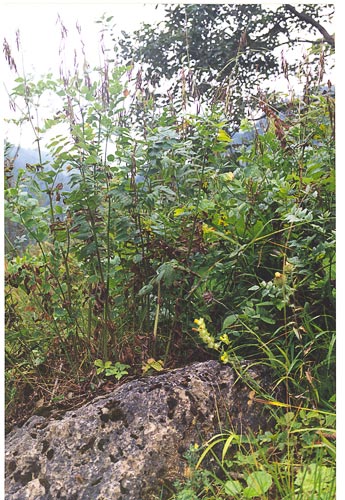Relatives
Galega orientalis L. - Eastern galega, fodder galega.
Taxonomic position.
Family Leguminosae Endl., genus Galega L.Biology and morphology.
2n=16. Perennial with spring-planted type of growth. Stems hollow, leafy, erect, from 0.8 cm to 1.5 m high, branch stems arise from middle upwards of main stems. Tap-rooted and rhizomatous with overwintered rhizomes emerging in spring to initiate new shoots which eventually take root and become independent plants. Leaves pinnate or imparipinnate 7-23 cm length with 5-6 pairs of oval leaflets 2.5-5.5 cm length. Inflorescences comprised of bright lilac clusters with 25-70 florets. Pods 2-5 cm long. Cross-pollinated by bees. Blossoms June, seeds ripening August - September.Distribution.
Indigenous to Caucasus mountain region.Ecology.
Mesophyte. Grows in groups on mountainside.s meadows at 300-2200 meters above sea-level.Utilization and economic value.
New perspective fodder crop, which can compete with traditional legume perennial herbs (alfalfa, clover, etc). Improve soil.s structure and fertility. A valuable preceding culture. Good melleous.Literature.
Grossheim A. A. Galega genus. Flora of the Caucasus. 1952, v.5, pp. 234-235.Medvedev P. F.; Smetannikova A. I. Forage plants of the European part of the USSR.1981, Leningrad, .Colos., p. 335.
Uteush U. A. New perspective fodder crops. Kiev, 1991, p. 192.
Flora of the USSR. 1945, v.11, pp. 303-304.


